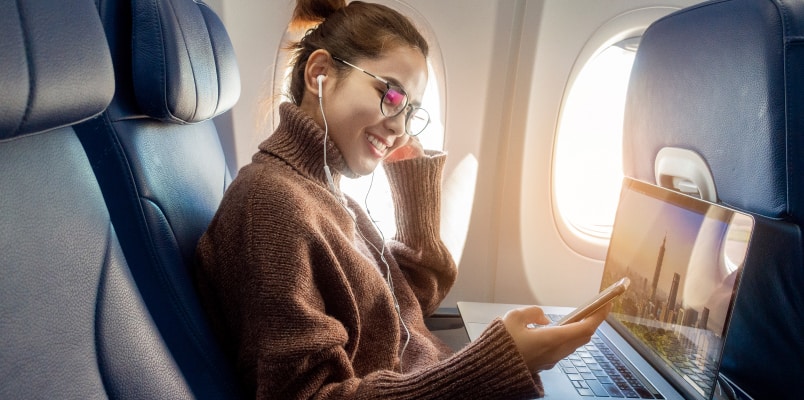Guide to Deducting Business travel Expenses
Updated to tax year 2024.
If your self-employment requires you to travel, you’ll know that the costs can quickly add up. Follow this quick guide to learn how to lower your tax bill with business travel deductions. Follow this quick guide to learn how to lower your tax bill with business travel deductions.
Business mileage vs. business travel expenses
As a business owner, you are considered “traveling” for tax purposes when you are away from your tax home and at a business destination long enough to require sleep — generally overnight. You can deduct not only your mileage but also your lodging and a portion for your business meals. You can deduct 50% of your meals costs for business purposes as of 2024. If you travel to see a client during the day but return home in the evening, you can only deduct the business miles you drove to the meeting.
Determining your tax home
According to the IRS, your tax home for the purposes of determining business-related travel is the city or general area where your main place of business is located, even if that differs from where your family home is located. If you don’t have one particular place of business, your family home may count as your tax home.
If you are unsure how to determine your tax home, IRS Publication 463 provides additional information and helpful examples.
Vehicle expense deduction
Being self-employed allows you to deduct vehicle expenses when you drive your personal car for business purposes. You can deduct vehicle expenses when you drive your personal car for business purposes. The standard mileage allowance for tax year 2024 is 67 cents per mile (increasing to 70 cents per mile in 2025). The standard mileage allowance for tax year 2024 is 67 cents per mile (increasing to 70 cents per mile for 2025).
Whichever method you choose, you must maintain good bookkeeping for your deductible expenses. Record the date, number of miles, and purpose of each trip. You can do this with some apps. You can also calculate your deductible miles using the TaxAct(r) Mileage Reimbursement Calculator.
Remember, you can also deduct the cost of parking fees and tolls. Those costs are deductible in addition to other car expenses or the standard mileage rate, so make sure to include them in your recordkeeping.
Deducting travel expenses
Here’s a list of common self-employed business travel expenses you can deduct as a taxpayer:
- Meal expenses (50% deductible)
- Lodging
- Transportation costs (can include gas, airfare, car rental fees, taxis, baggage fees and other travel-related expenses)
- The cost of transporting supplies, such as display materials
- Dry cleaning and laundry while you travel
- Business expenses while traveling, such as internet and phone charges
Tax deductions: combining business and pleasure
It’s tempting to combine business and pleasure on trips when you are self-employed. If you must go to Las Vegas, why not spend a couple more days seeing the sights — and take someone along with you, perhaps?
There’s nothing wrong with enjoying business travel, but make sure you only deduct the portion of your trip that is actually for business. You can’t claim the second airline ticket, but you can deduct the amount of your hotel room for one person, which is often the same or not much different than it would be for you and your partner if you share a room. You can’t deduct a second airline ticket but you can deduct what your hotel room would cost for just one person. This is often the same as the cost of a two-person room.





